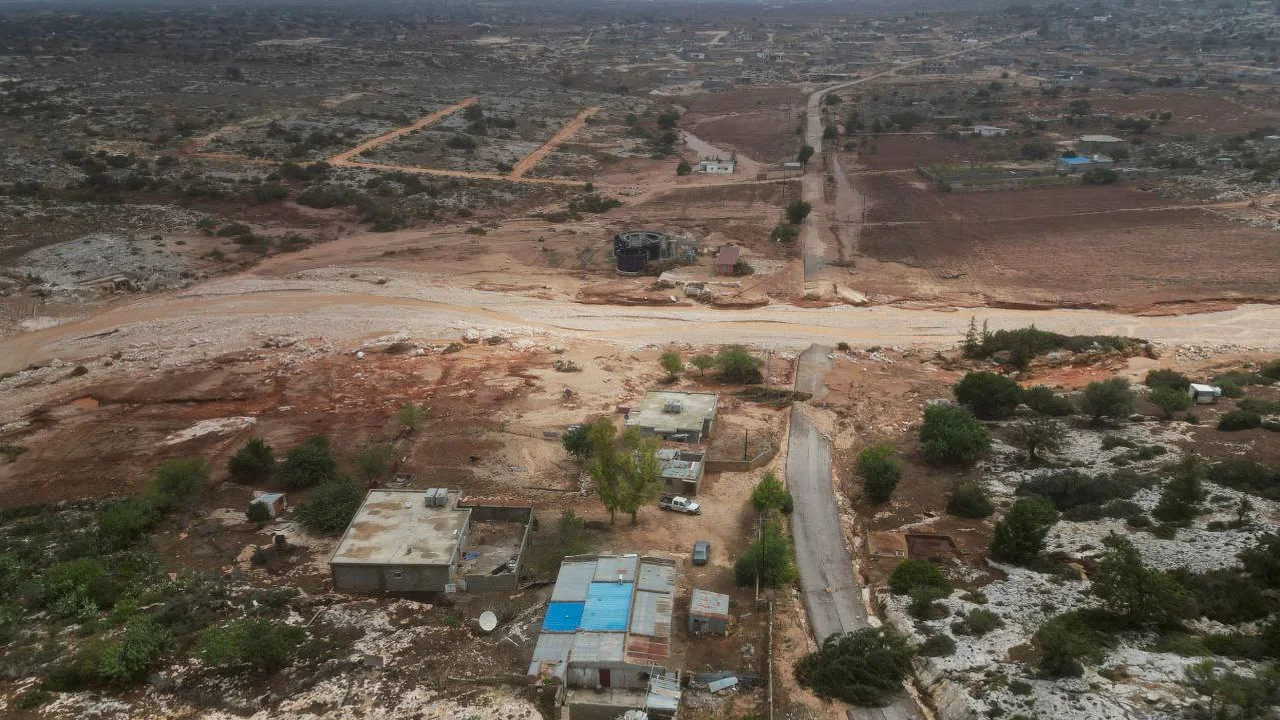In a tragic turn of events, Libya faces unprecedented flooding, with 2,000 fatalities and 10,000 missing individuals. Learn about the devastating impact of Storm Daniel, the challenges of rescue efforts, and international aid responses in this comprehensive 5,000-word article.

Libya is grappling with a dire humanitarian crisis as catastrophic flooding, triggered by Storm Daniel, has left a trail of devastation. The situation is nothing short of heartbreaking, with a death toll exceeding 2,000 lives lost and an estimated 10,000 people missing. In this article, we delve into the details of this tragic event, the challenges faced by the affected regions, and the international response to this disaster.
The Deluge Begins
The ordeal began when Storm Daniel unleashed an unprecedented deluge of rain on Libya’s northeast, leading to the collapse of two dams. This deluge exacerbated the already inundated areas, resulting in widespread chaos and suffering.
The Missing: A Grim Reality
Tamer Ramadan, the head of the International Federation of Red Cross and Red Crescent Societies delegation in Libya, revealed the harrowing numbers during a press briefing in Geneva, Switzerland. She lamented, “The death toll is huge,” underscoring the gravity of the situation. In the worst-hit city of Derna, approximately 6,000 people are missing, as disclosed by Othman Abduljalil, the health minister in Libya’s eastern administration. Entire neighbourhoods have been engulfed by the relentless floodwaters, leaving authorities scrambling for solutions.
Desolation in Derna
Othman Abduljalil, who toured Derna, described the scene as “catastrophic,” with lifeless bodies strewn across the city. He further added, “There are families still stuck inside their homes and there are victims under the rubble… I expect people have been washed away into the sea.” The scale of destruction is unfathomable, and the city is grappling with the aftermath.

The Origins of the Disaster
This deluge can be attributed to a formidable low-pressure system that had earlier wreaked havoc in Greece before moving into the Mediterranean and evolving into a tropical-like cyclone known as a medicane. However, the crisis in Libya is further compounded by political divisions that have plagued the nation for a decade.
Political Fractures
Libya is marred by political divisions, with rival administrations vying for control. The UN-backed Government of National Unity (GNU), led by Abdulhamid Dbeibeh, holds sway in Tripoli, while the eastern territories are under the control of Commander Khalifa Haftar and his Libyan National Army (LNA), in support of the eastern-based parliament led by Osama Hamad. Derna, lying east of Benghazi, falls within Haftar’s jurisdiction, adding complexity to the disaster response efforts.
Dams in Ruin
The collapse of two dams under the relentless pressure of flooding was the catalyst for the catastrophe in Derna. Ahmed Mismari, the spokesperson for the LNA, grimly stated, “Three bridges were destroyed. The flowing water carried away entire neighbourhoods, eventually depositing them into the sea.” Homes, vehicles, and debris were swept away by the forceful, muddy currents, making rescue operations perilous. Osama Aly, the head of Libya’s Emergency and Ambulance authority, revealed that phone lines in the city are down, hindering rescue efforts. He lamented the lack of preparation, acknowledging, “Libya was not prepared for a catastrophe like that.”
The Unprecedented Crisis
Osama Hamad, the head of the eastern administration, aptly described the situation as “unprecedented.” This catastrophic flooding has ravaged several cities, including Al-Bayda, Al-Marj, Tobruk, Takenis, Al-Bayada, and Battah, along with the entire eastern coast up to Benghazi.
International Aid Efforts
In the face of this disaster, several countries have extended a helping hand. Turkish aircraft carrying humanitarian aid have arrived in Libya, with Turkish President Recep Tayyip Erdogan announcing the dispatch of 168 search and rescue teams and humanitarian aid to Benghazi. The US Embassy in Tripoli has declared a humanitarian need, initiating funding for relief efforts in Libya. The United Arab Emirates and Egypt have also pledged support and condolences to the affected nation.
The Ongoing Threat
The weather system responsible for this catastrophe is expected to slowly move eastward toward northern Egypt, with rainfall potentially reaching 50mm over the next two days. This region typically receives less than 10mm of rainfall throughout September.
Climate Change’s Role
It’s crucial to note that climate change is contributing to the intensification of such extreme weather events. Warmer oceans provide storms with more energy, and the Mediterranean waters’ above-average temperatures have played a role in the formation of this devastating event. This disaster occurs in a year marked by a series of deadly climate extremes, underlining the urgency of addressing climate change.
The catastrophic flooding in Libya is an agonizing tragedy that has taken a heavy toll on lives and infrastructure. As rescue efforts continue and international aid pours in, it is a stark reminder of the need for climate action and unity in facing the challenges of a changing world. Libya, along with many other regions grappling with extreme weather events, stands as a testament to the urgent need for collective action to combat climate change and protect vulnerable communities.





